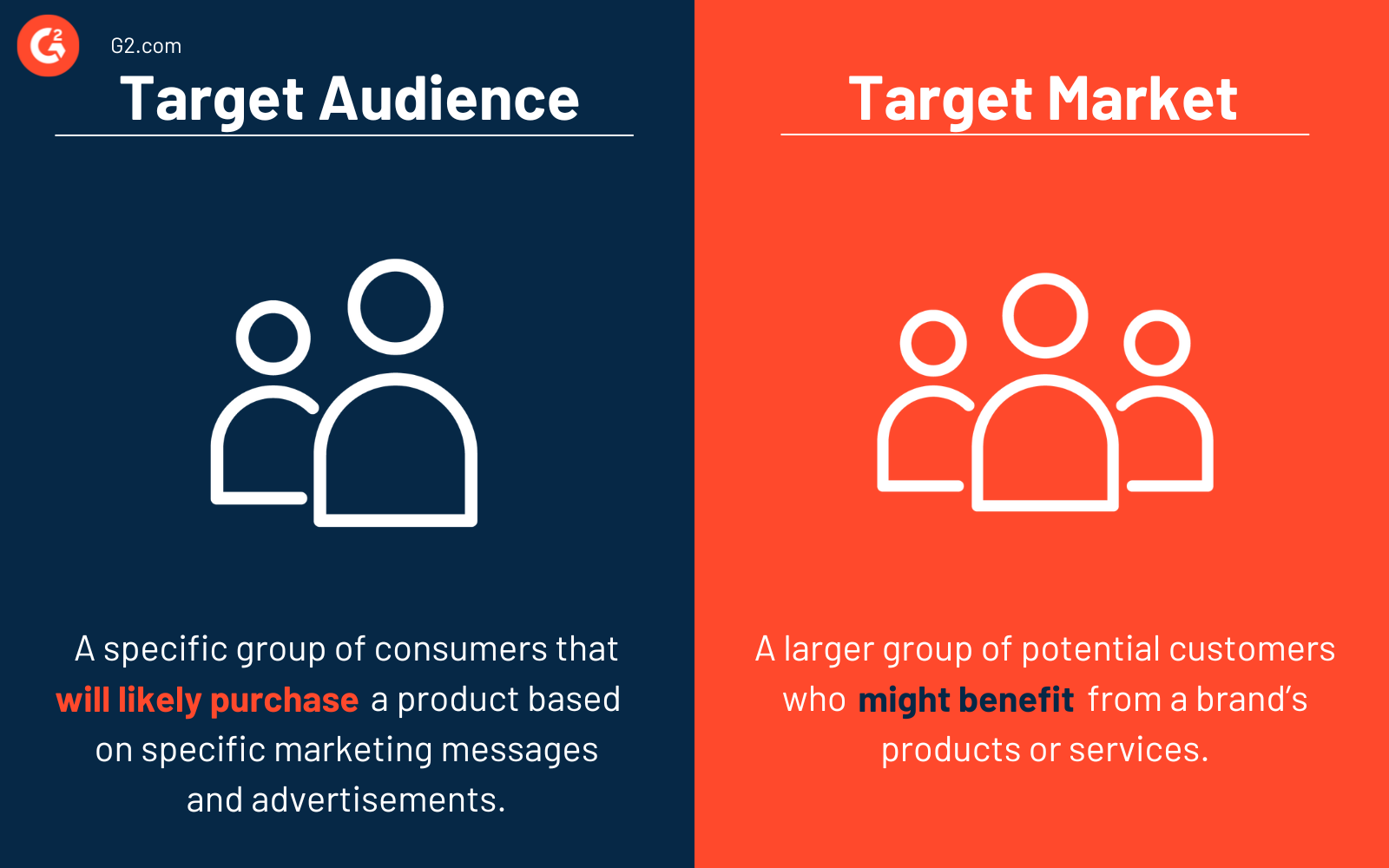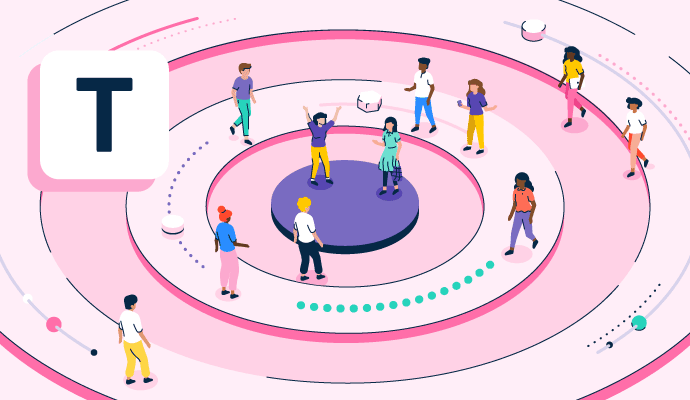What is a target audience?
A target audience refers to a group of people that are most likely to convert from leads into customers. Target audiences share similar traits such as age, gender, location, industry, employment, and income. Identifying and understanding the target audience enables businesses to craft compelling and intentional marketing strategies.
Marketers use audience intelligence platforms to gather data and in-depth insights into their desired target audience. The data allows marketers to create specific customer segments, pinpoint potential influence relationships, gather market research, and inform decision-making for campaigns and strategies.
Types of target audiences
The way companies identify and segment target audiences varies, and the type of segments differ based on the unique needs of the business. The following are some examples of the kinds of target audiences to consider.
- Existing customers: Brands may want to target existing customers when launching new products and services and offering upgrades and sales. Targeting existing customers can be cost-effective and helps organizations generate more revenue with a group they have already built trust with.
- Demographics: Marketers build marketing campaigns around demographics, including age, ethnicity, gender, education, and marital status. Businesses may choose to target different audiences composed of a combination of demographics.
- Purchase intention: Also known as buying intent, purchase intention refers to the likelihood that a consumer will buy a product or service. Marketing and sales teams can use purchase intention to customize advertisements and generate sales.
- Interests: Understanding what hobbies and interests consumers have helps brands connect with audiences in a relatable and personal way. If most consumers share a similar hobby, marketing teams can work that into their marketing campaigns to drive appeal.
- Location: Targeting audience members by location is valuable for filtering ads and sales to geographic regions. Brands may need to target audiences this way when customers cannot purchase from specific locations.
- Everyone: Some companies may pursue a broad, one-size-fits-all marketing approach for their products and services. This might be effective for products designed for various ages, locations, income levels, and interests.
Benefits of identifying target audiences
Understanding and capitalizing on target audiences has benefits. Businesses that spend time determining their target audiences and defining customer segments may experience the following advantages.
- Increased revenue. Directly reaching potential consumers who are likely to convert leads to more sales and revenue if the consumers find value in purchasing the product or service. While focusing on a specific audience might seem exclusive, focusing helps businesses advertise to prospects ready to buy.
- More high-quality leads. While it can be tempting to advertise to everyone, tailoring advertisements and campaigns to targeted audiences brings in more high-quality leads. More high-quality leads generate more sales and revenue over time.
- Efficient marketing campaigns. Targeting particular audiences allows marketing teams to focus their efforts and spend their budgets in areas with the highest return on investment. Not only are targeted campaigns more valuable from a spending perspective, but they also make better use of time, allowing marketers and sales teams to connect with interested consumers.
Best practices for identifying target audiences
Brands can determine their target audience by studying and learning from existing data, information, and sources. Even though every organization may take a unique approach, below are some best practices to consider to increase the chances of finding the right target audience.
- Start with existing customers. Current customers need a brand’s product or service since they have already purchased it. Marketers should start by reviewing the demographics of the customer base to understand who they are. It would also be wise for businesses to talk to customers to understand what they love about the brand, product, and team.
- Analyze social media followings. Like existing customers, social followers are another audience brands should review to determine who likes their social content. Not all social media followers are existing customers, but they are probably genuinely interested in the brand or products. Additionally, marketers should look at followers who engage with content.
- Review the website and content analytics. Analytics tools provide extensive data about the users visiting websites and which types of content they’re consuming. Teams can use these insights to inform content planning processes, ensuring the content they provide is what audience members genuinely want.
Target audience vs. target market
It's common to confuse the target audience with the target market, but the two are very different.

A target audience refers to a specific group of consumers that will most likely purchase a product or service based on specific marketing messages and advertisements. Target audiences have similar qualities, such as age, gender, location, or income level.
A target market is a larger group of people who might benefit from a brand’s products or services. Target markets are broader in scope than target audiences, as the latter consists of a more defined group of potential consumers.
Attracting the attention of target audience members can be tough. Explore advertising techniques that work.

Alyssa Towns
Alyssa Towns works in communications and change management and is a freelance writer for G2. She mainly writes SaaS, productivity, and career-adjacent content. In her spare time, Alyssa is either enjoying a new restaurant with her husband, playing with her Bengal cats Yeti and Yowie, adventuring outdoors, or reading a book from her TBR list.



















